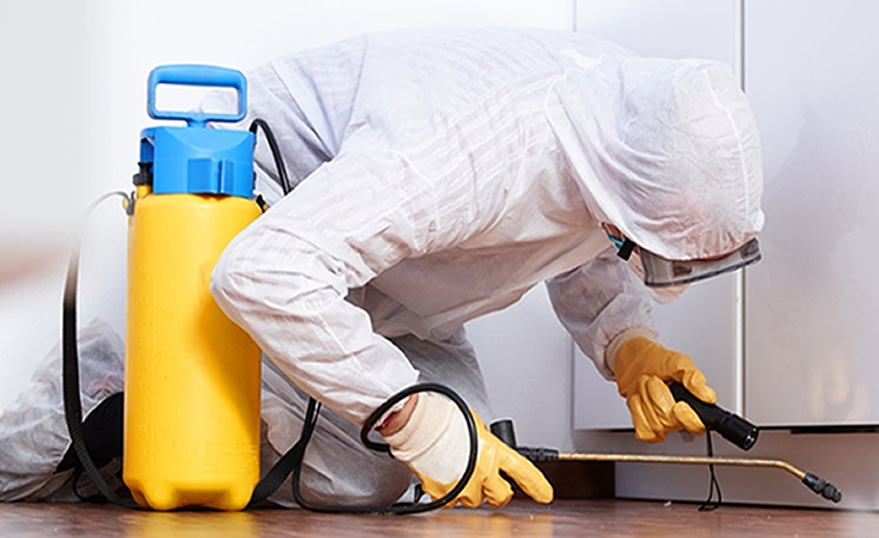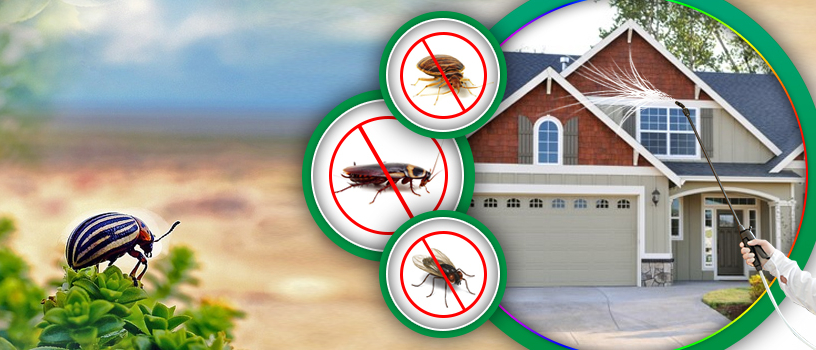Proven Bed Bug Heat Treatment: Remove Bed Bugs with Heat!
Proven Bed Bug Heat Treatment: Remove Bed Bugs with Heat!
Blog Article
Specialist Insect Control Techniques for Long-Term Results
Expert parasite control techniques encapsulate a detailed approach that begins with a detailed inspection and evaluation, complied with by specific parasite identification to recognize their behavior patterns. The implementation of Integrated Insect Administration (IPM) concepts, combined with eco-conscious therapies, develops the foundation of sustainable insect removal.
Assessment and Evaluation
Upon going into a residential or commercial property for bug control solutions, the preliminary step is a complete assessment and evaluation to determine the degree of the invasion and identify the most efficient therapy strategy. Expert insect control service technicians are educated to carefully analyze the premises, trying to find indications of insect activity such as droppings, munch marks, nests, or any kind of architectural damage. They will additionally evaluate the conditions that might be drawing in insects, such as food sources, water leakages, or entrance points.

Bug Recognition and Behavior

Additionally, comprehending the behavior of the identified pest is essential to executing effective control measures. Recognizing where bugs nest, what they feed on, and their activity patterns can help pest control specialists develop strategies to eradicate them successfully. Some bugs may be nighttime, while others are a lot more active throughout the day. This expertise enables the application of treatments at optimum times for optimum effectiveness.
Integrated Parasite Administration (IPM)
Integrated Pest Administration (IPM) strategies incorporate multiple strategies to control and stop insect problems in a sustainable and eco friendly fashion. Exterminator DC. By integrating techniques such as organic control, environment adjustment, adjustment of social techniques, and the usage of immune ranges, IPM aims to reduce the use of chemical pesticides
Among the essential principles of IPM is the focus on prevention. This positive strategy entails monitoring bug populaces frequently to identify any possible concerns before they intensify. By recognizing insect issues beforehand, pest control actions can be implemented quickly and successfully.
In addition, IPM promotes using safe bug control approaches whenever feasible. This can consist of employing natural predators of the pests, introducing valuable pests, or using pheromones to disrupt mating patterns. By decreasing reliance on chemical pesticides, IPM not only safeguards the environment yet additionally aids keep an equilibrium in the ecological community.
Environmentally-Friendly Therapies
Applying eco-conscious strategies in pest control treatments can effectively deal with infestations while prioritizing ecological sustainability. Environmentally-friendly therapies concentrate on lessening the effect of insect control approaches on environments, non-target organisms, and human health and wellness. These techniques usually include making use of all-natural killers, such as ladybugs or nematodes, to regulate pest populaces, minimizing the requirement for chemical interventions. Additionally, strategies pest services like environment manipulation, such as adjusting dampness levels or removing food resources, can assist discourage pests without making use of dangerous compounds.
Another secret aspect of environmentally-friendly therapies is the use of natural and biodegradable products that break down swiftly without leaving hazardous deposits in the environment. Organic insecticides obtained from plants like chrysanthemums or neem offer efficient bug control while positioning marginal risk to non-target types. Utilizing approaches like warmth treatments or scent catches can target specific insects with accuracy, lowering the overall environmental effect of bug control techniques.
Ongoing Tracking and Upkeep
Continual surveillance and upkeep are necessary parts of effective parasite control management. Recurring surveillance plays a vital role in making sure that bug invasions are detected early and managed promptly. Regular evaluations by qualified experts are needed to determine any type of indications of parasite activity, assess the effectiveness of previous treatments, and make adjustments to the pest control strategy as required. By monitoring parasite populations in time, insect control experts can track trends, prepare for possible problems, and carry out precautionary steps to decrease the threat of future problems.
Along with surveillance, upkeep practices are essential for lasting pest control success. This includes implementing appropriate hygiene steps to get rid of possible food and water sources for insects, securing off access points to stop parasites from entering the facilities, and attending to any kind of structural issues that might assist in parasite infestations (Exterminator DC). By including ongoing monitoring and maintenance into an get more integrated insect administration method, organizations can make certain a pest-free environment and guard their home against expensive damage and health and wellness dangers
Final Thought
Finally, using expert pest control techniques such as extensive evaluation and evaluation, accurate pest identification and understanding of their actions, incorporated bug administration strategies, environmentally-friendly treatments, and ongoing surveillance and upkeep are necessary for accomplishing long-term cause parasite control. By applying these techniques, people can efficiently take care of bug invasions and preserve a you could try these out pest-free environment in a lasting way.
Report this page